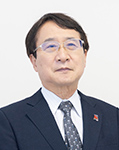Serological biomarkers of granuloma progression in sarcoidosis
Vol 4, Issue 1, 2020
VIEWS - 4105 (Abstract)
Abstract
Sarcoidosis is a systemic disorder with unknown etiology and pathogenesis characterized by non-caseating granulomas, and different clinical manifestations of sarcoidosis hinder diagnosis and treatment. Therefore, a comprehensive understanding of serological markers based on clinical observations of sarcoidosis and the progression of granulomas would aid analysis in routine clinical practice. In this review, we overview common serological markers, including angiotensin converting enzyme (ACE) and lysozyme, and describe in detail new promising indices in sarcoidosis such as a T cell serological marker (soluble interleukin 2 receptor; sIL-2R) and thymus and activation-regulated chemokine (TARC/CCL17).
Keywords
Full Text:
PDFReferences
- Loke WS, Herbert C, Thomas PS. Sarcoidosis: Immunopathogenesis and Immunological Markers. Int J Chronic Dis 2013; 2013: 928601. doi: 10.1155/2013/928601.
- English JC, 3rd, Patel PJ, Greer KE. Sarcoidosis. J Am Acad Dermatol 2001; 44(5): 725–743; quiz 744–726. doi: 10.1067/mjd.2001.114596.
- Iannuzzi MC, Fontana JR. Sarcoidosis: Clinical presentation, immunopathogenesis, and therapeutics. Jama 2011; 305(4): 391–399. doi: 10.1001/jama.2011.10.
- Chen ES, Moller DR. Sarcoidosis: Scientific progress and clinical challenges. Nat Rev Rheumatol 2011; 7(8): 457–467. doi: 10.1038/nrrheum.2011.93.
- Iannuzzi MC, Rybicki BA, Teirstein AS. Sarcoidosis. The New England journal of medicine 2007; 357(21): 2153–2165. doi: 10.1056/NEJMra071714.
- Thi Hong Nguyen C, Kambe N, Kishimoto I, et al. Serum soluble interleukin-2 receptor level is more sensitive than angiotensin-converting enzyme or lysozyme for diagnosis of sarcoidosis and may be a marker of multiple organ involvement. J Dermatol 2017. doi: 10.1111/1346-8138.13792.
- Zumla A, James DG. Granulomatous infections: Etiology and classification. Clin Infect Dis 1996; 23(1): 146–158. doi: 10.1093/clinids/23.1.146.
- Molina-Ruiz AM, Requena L. Foreign Body Granulomas. Dermatol Clin 2015; 33(3): 497–523. doi: 10.1016/j.det.2015.03.014.
- Zissel G, Muller-Quernheim J. Cellular Players in the Immunopathogenesis of Sarcoidosis. Clinics in chest medicine 2015; 36(4): 549–560. doi: 10.1016/j.ccm.2015.08.016.
- Lynch JP, 3rd, Kazerooni EA, Gay SE. Pulmonary sarcoidosis. Clinics in chest medicine 1997; 18(4): 755–785. doi: 10.1016/j.ccm.2004.04.006.
- Gilbert S, Steinbrech DS, Landas SK, et al. Amounts of angiotensin-converting enzyme mRNA reflect the burden of granulomas in granulomatous lung disease. The American review of respiratory disease 1993; 148(2): 483–486. doi: 10.1164/ajrccm/148.2.483.
- Chopra A, Kalkanis A, Judson MA. Biomarkers in sarcoidosis. Expert Rev Clin Immunol 2016; 12(11): 1191–1208. doi: 10.1080/1744666x.2016.1196135.
- DeRemee RA, Rohrbach MS. Serum angiotensin-converting enzyme activity in evaluating the clinical course of sarcoidosis. Annals of internal medicine 1980; 92(3): 361–365. doi: 10.7326/0003-4819-92-3-361.
- Gronhagen-Riska C, Selroos O, Wagar G, et al. Angiotensin-converting enzyme. II. Serum activity in early and newly diagnosed sarcoidosis. Scandinavian J Respir Dis 1979; 60(2): 94–101.
- Lieberman J. Elevation of serum angiotensin-converting-enzyme (ACE) level in sarcoidosis. Am J Med 1975; 59(3): 365–372. doi: 10.1016/0002-9343(75)90395-2.
- Turton CW, Grundy E, Firth G, et al. Value of measuring serum angiotensin I converting enzyme and serum lysozyme in the management of sarcoidosis. Thorax 1979; 34(1): 57–62. doi: 10.1136/thx.34.1.57.
- Tomita H, Ina Y, Sugiura Y, et al. Polymorphism in the angiotensin-converting enzyme (ACE) gene and sarcoidosis. Am J Respir Crit Care Med 1997; 156(1): 255–259. doi: 10.1164/ajrccm.156.1.9612011.
- Gronhagen-Riska C, Selroos O. Angiotensin converting enzyme. IV. Changes in serum activity and in lysozyme concentrations as indicators of the course of untreated sarcoidosis. Scandinavian J Respir Dis 1979; 60(6): 337–344.
- Lieberman J, Nosal A, Schlessner A, et al. Serum angiotensin-converting enzyme for diagnosis and therapeutic evaluation of sarcoidosis. The American review of respiratory disease 1979; 120(2): 329–335. doi: 10.1164/arrd.1979.120.2.329.
- Miyoshi S, Hamada H, Kadowaki T, et al. Comparative evaluation of serum markers in pulmonary sarcoidosis. Chest 2010; 137(6): 1391–1397. doi: 10.1378/chest.09-1975.
- Tomita H, Sato S, Matsuda R, et al. Serum lysozyme levels and clinical features of sarcoidosis. Lung 1999; 177(3): 161–167. doi: 10.1007/PL00007637.
- Nicholas W. Lukacs CH, Stephan W. Chensue, Kate Blease, et al. Type1/Type2 Cytokine Paradigm and the Progression of pulmonary fibrosis. Chest 2001; 120(1 Suppl): 5S–8S. doi: 10.1378/chest.120.1_suppl.S5.
- Ben G. Marshall RJS. T Cells and Fibrosis. Chemical immunology 2000; 78: 148–158. doi: 10.1159/000058824.
- Boyman O, Sprent J. The role of interleukin-2 during homeostasis and activation of the immune system. Nat Rev Immunol 2012; 12(3): 180–190. doi: 10.1038/nri3156.
- Lawrence EC, Berger MB, Brousseau KP, et al. Elevated serum levels of soluble interleukin-2 receptors in active pulmonary sarcoidosis: Relative specificity and association with hypercalcemia. Sarcoidosis 1987; 4(2): 87–93.
- Rubin LA, Kurman CC, Fritz ME, et al. Soluble interleukin 2 receptors are released from activated human lymphoid cells in vitro. J Immunol (Baltimore, Md : 1950) 1985; 135(5): 3172–3177.
- Witkowska AM. On the role of sIL-2R measurements in rheumatoid arthritis and cancers. Mediators of inflammation 2005; 2005(3): 121–130. doi: 10.1155/mi.2005.121.
- Shijubo N, TY. Diagnosis Criteria and Classification of Disease Severity for Sarcoidosis in Japan. The Japanese journal of Sarcoidosis and Other Granulomatous Disorders 2015; 35(1): 3–8.
- Ziegenhagen MW, Rothe ME, Schlaak M, et al. Bronchoalveolar and serological parameters reflecting the severity of sarcoidosis. Eur Respir J 2003; 21(3): 407–413. doi: 10.1183/09031936.03.00010403.
- Ina Y, Takada K, Sato T, et al. Soluble interleukin 2 receptors in patients with sarcoidosis. Possible origin. Chest 1992; 102(4): 1128–1133. doi: 10.1378/chest.102.4.1128.
- Rubin LA, Nelson DL. The soluble interleukin-2 receptor: Biology, function, and clinical application. Annals of internal medicine 1990; 113(8): 619–627. doi: 10.7326/0003-4819-113-8-619.
- Imai T, Yoshida T, Baba M, et al. Molecular cloning of a novel T cell-directed CC chemokine expressed in thymus by signal sequence trap using Epstein-Barr virus vector. J Bio chem 1996; 271(35): 21514–21521.
- Imai T, Baba M, Nishimura M, et al. The T cell-directed CC chemokine TARC is a highly specific biological ligand for CC chemokine receptor 4. J Bio chem 1997; 272(23): 15036–15042.
- Sallusto F, Lanzavecchia A, Mackay CR. Chemokines and chemokine receptors in T-cell priming and Th1/Th2-mediated responses. Immunology today 1998; 19(12): 568–574.
- D'Ambrosio D, Iellem A, Bonecchi R, et al. Selective up-regulation of chemokine receptors CCR4 and CCR8 upon activation of polarized human type 2 Th cells. J Immunol (Baltimore, Md : 1950) 1998; 161(10): 5111–5115.
- Nureki S, Miyazaki E, Ando M, et al. Circulating levels of both Th1 and Th2 chemokines are elevated in patients with sarcoidosis. Respiratory medicine 2008; 102(2): 239–247. doi: 10.1016/j.rmed.2007.09.006.
- Nguyen CTH, Kambe N, Ueda-Hayakawa I, et al. TARC expression in the circulation and cutaneous granulomas correlates with disease severity and indicates Th2-mediated progression in patients with sarcoidosis. Allergol Int 2018; S1323-8930(18)30016-9. doi: 10.1016/j.alit.2018.02.011.
- Baughman RP, Ploysongsang Y, Roberts RD, et al. Effects of sarcoid and steroids on angiotensin-converting enzyme. The American review of respiratory disease 1983; 128(4): 631–633. doi: 10.1164/arrd.1983.128.4.631.
- Kita T, Watanabe S, Yano F, et al. Clinical significance of the serum IL-2R level and Ga-67 scan findings in making a differential diagnosis between sarcoidosis and non-Hodgkin's lymphoma. Ann Nucl Med 2007; 21(9): 499–503. doi: 10.1007/s12149-007-0060-9.
- Petereit HF, Reske D, Tumani H, et al. Soluble CSF interleukin 2 receptor as indicator of neurosarcoidosis. J Neurol 2010; 257(11): 1855–1863. doi: 10.1007/s00415-010-5623-3.
- Gungor S, Ozseker F, Yalcinsoy M, et al. Conventional markers in determination of activity of sarcoidosis. International immunopharmacology 2015; 25(1): 174–179. doi: 10.1016/j.intimp.2015.01.015.
- Grutters JC, Fellrath JM, Mulder L, et al. Serum soluble interleukin-2 receptor measurement in patients with sarcoidosis: A clinical evaluation. Chest 2003; 124(1): 186–195. doi: 10.1378/chest.124.1.186.
- Ziegenhagen MW, Benner UK, Zissel G, et al. Sarcoidosis: TNF-alpha release from alveolar macrophages and serum level of sIL-2R are prognostic markers. Am J Respir Crit Care Med 1997; 156(5): 1586–1592. doi: 10.1164/ajrccm.156.5.97-02050.
- Bargagli E, Bianchi N, Margollicci M, et al. Chitotriosidase and soluble IL-2 receptor: Comparison of two markers of sarcoidosis severity. Scand J Clin Lab Invest 2008; 68(6): 479–483. doi: 10.1080/00365510701854975.
- Vorselaars AD, van Moorsel CH, Zanen P, et al. ACE and sIL-2R correlate with lung function improvement in sarcoidosis during methotrexate therapy. Respiratory medicine 2015; 109(2): 279–285. doi: 10.1016/j.rmed.2014.11.009.
- Gundlach E, Hoffmann MM, Prasse A, et al. Interleukin-2 Receptor and Angiotensin-Converting Enzyme as Markers for Ocular Sarcoidosis. PloS one 2016; 11(1): e0147258. doi: 10.1371/journal.pone.0147258.
- Ina Y, Takada K, Noda M, et al. Serum soluble IL-2 receptor level in patients with sarcoidosis. Nihon Kyobu Shikkan Gakkai Zasshi 1991; 29(3): 316–321. doi; 10.11389/jjrs1963.29.316.
- Keicho N, Kitamura K, Takaku F, et al. Serum concentration of soluble interleukin-2 receptor as a sensitive parameter of disease activity in sarcoidosis. Chest 1990; 98(5): 1125–1129.
- Rothkrantz-Kos S, van Dieijen-Visser MP, Mulder PG, et al. Potential usefulness of inflammatory markers to monitor respiratory functional impairment in sarcoidosis. Clinical chemistry 2003; 49(9): 1510–1517.
- Prasse A, Katic C, Germann M, et al. Phenotyping sarcoidosis from a pulmonary perspective. Am J Respir Crit Care Med 2008; 177(3): 330–336. doi: 10.1164/rccm.200705-742OC.
DOI: https://doi.org/10.24294/ti.v4.i1.721
Refbacks
- There are currently no refbacks.
Copyright (c) 2020 Chuyen Thi Hong Nguyen, Naotomo Kambe, Ikuko Ueda-Hayakawa, Hiroyuki Okamoto

This work is licensed under a Creative Commons Attribution-NonCommercial 4.0 International License.
This site is licensed under a Creative Commons Attribution 4.0 International License.












